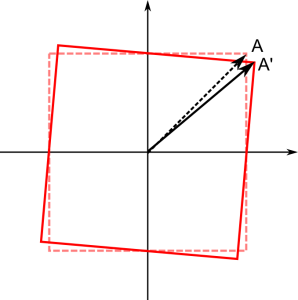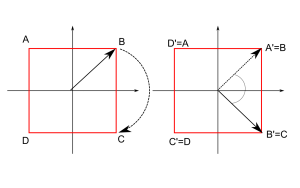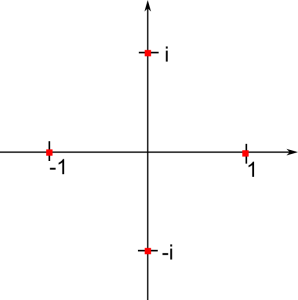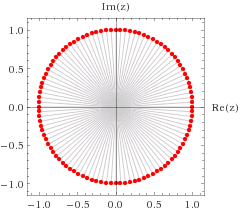In the preface to my book I wrote: “To me, the most beautiful thing in physics is when something incomprehensible, suddenly becomes comprehensible, because of a deep explanation.”
Here is one such example, although most experts would argue not a good one. More about that later.
We know there are electrons. Many, many electrons. They all have exactly the same quantum numbers, such as electric charge. In fact, nowadays phycisist go as far as saying they are all indistinguishable. This means if we perform an experiment with many electrons it’s impossible to say which electron is which at the end of the experiment.
Another thing we know is that there is to every elementary particle an antiparticle with exactly the opposite quantum numbers. The antiparticle of the electron is the positron.
These are facts and the standard model of modern physics works perfectly if we put these things into the theory by hand. Unfortunately this does not answer the question why this is the case? Why are there antiparticles? Why are all electrons exactly the same? The same holds true for every other fundamental particle. For example, all up-quarks are exactly the same and there exists an anti-up-quark. (Unfortunately there isn’t a better name.)
There is a beautiful answer to both questions that was popularized by nobel price laureate Richard Feynman. In his Nobel lecture he told the story that Princeton proffessor John Wheeler called him and said : “Feynman, I know why all electrons have the same charge and the same mass” “Why?” “Because, they are all the same electron!”
What? To understand why a sane person would suggest something like this we need some background.
The standard model describes interactions of fundamental particles with quantum field theory. The result of computations in quantum field theory are the same if we replace positrons with electrons that move backwards in time.
This is just a mathematical observation and, of course, it’s up to you which one is you favorite:
- two particles with opposite charge, the positron and the electron, or
- just one particle, the electron, going forward and backward in time.
To give some credibility to the second possibility let me tell you that it’s called Feynman–Stueckelberg interpretation and quote another Nobel laureate, Yoichiro Nambu. He applied this idea to all production and annihilation of particle-antiparticle pairs. In “The Use of the Proper Time in Quantum Electrodynamics” he wrote: “the eventual creation and annihilation of pairs that may occur now and then is no creation or annihilation, but only a change of direction of moving particles, from past to future, or from future to past.”
So… do we agree that the second choice is not complete non-sense?
![Electron-positron annihilation by Joel Holdsworth (Joelholdsworth) [GFDL (http://www.gnu.org/copyleft/fdl.html), CC-BY-SA-3.0 (http://creativecommons.org/licenses/by-sa/3.0/) or CC BY 2.5 (http://creativecommons.org/licenses/by/2.5)], via Wikimedia Commons](http://jakobschwichtenberg.com/wp-content/uploads/2015/07/500px-Feynmann_Diagram_Gluon_Radiation-300x191.png)
Electron-positron annihilation by Joel Holdsworth (Joelholdsworth) [GFDL (http://www.gnu.org/copyleft/fdl.html), CC-BY-SA-3.0 (http://creativecommons.org/licenses/by-sa/3.0/) or CC BY 2.5 (http://creativecommons.org/licenses/by/2.5)], via Wikimedia Commons
To summarize: All electrons are exactly the same, because they are all one and the same electron. This is possible, because electrons are able to move backwards in time. An electron moving backwards in time is a positron.
Now for some “Woah Dude” read “The Egg” by Andy Weir and then come back and read the epilog. I’ll wait.
Epilog
So, where’s the catch? The one-electron theory is experimentally disfavoured. It would mean that there is exactly the same number of electrons and positrons in the universe. All observations show that there are almost only particles in the universe.
If particles and antiparticles meet they annihilate, which results, for example, in photons. Thus if anywhere in the unvierse large amounts of antiparticles where present, we would see them. They would annihilate with ordinary particles and result in a distinct signal: large amounts of photons with energy equal to two times the particle mass, because of energy conservation. We don’t see such a singal anywhere and thus there is no reason to believe that there are antimatter galaxies somewhere in the universe.
Maybe there is a catch to the catch. It turns out that we don’t know if antiparticles have the same massas particles or if they differ by a sign. In other words: we don’t know if antiparticles have negative mass.
For normal particles the gravitational force is attractive, although the masses are the same. This is what causes the earth to revolve around the sun. The mass of the earth and the mass of the sun are positive and the gravitational force between them is attractive. This feature of gravity is in contrast to the other forces. For example, the electric force is attractive for opposite charges (+ and -) and repulsive for equal charges (+ and +).
Thus if antiparticles have negative mass the gravitational force between them and particles is repulsive. This could be the reason that particle and antiparticle galaxies never collide. (On cosmological scales the gravitational force is dominant, because galaxies consist of atoms that are mostly neutral.)
Negative mass for antiparticles is not a crackpot theory. There are arguments that if the Feynman-Stueckelberg interpretation is correct, antiparticles should have negative mass.
Threre are several experiments at CERN that test this right now. They use an old collider to produce stable, neutral, atoms that consist only of antiparticles. Then they check if they fly up or down. Think about Newton and his apple. He observed that it falls down on earth because of gravity. An apple with negative mass would fly up instead.
Such an experiment is not possible for a single antiparticle like a positron. The other forces are much stronger than the gravitational force and the effect of a negative mass is not visible for charged particles. This is the reason that we still don’t know if antiparticles have negative mass, although colliders like the LHC produce billions of them everyday.
The standard point of view is that the masses of particles and antiparticles are the same. This is the result if you apply the mathematical charge conjugation operator on the mathematical object that we use to describe a particle. This computation yields the mathematical object that we use to describe antiparticles and all quantum numbers get flipped, except for the mass.
Still, despite the Higgs mechanism, we don’t understand mass. We have no quantum theory of gravity. The standard model is not the end of the story. At a first glance it seems strange that all quantum numbers get flipped, except for mass – but who knows? In the end the experiments have to decide and I’m looking forward to the results of these experiments.
A last comment: the matter-antimatter asymmetry is one of the biggest unsolved problems of modern physics. It’s not possible to explain with the standard model why there is only matter in the universe and not equal amounts of antimatter.
 1) A square is mathematically a set of points (for example, the four corner points are part of this set) and a symmetry of the square is a transformation that maps this set of points into itself.
1) A square is mathematically a set of points (for example, the four corner points are part of this set) and a symmetry of the square is a transformation that maps this set of points into itself. e original set that defines
e original set that defines



